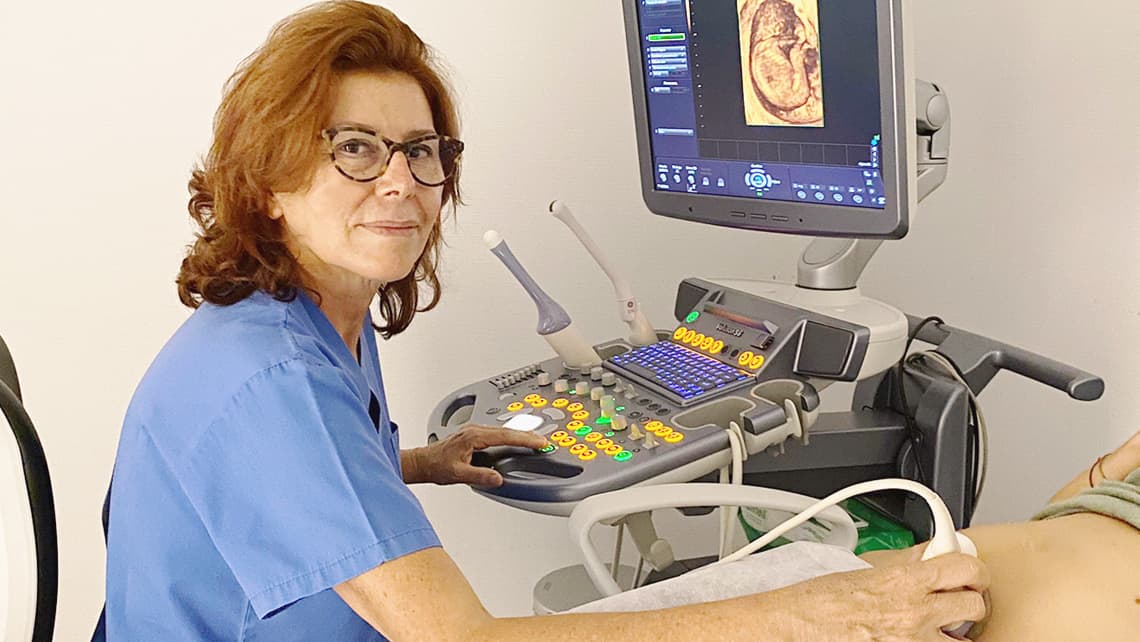
What is Adnexitis, its causes and treatment
The infectious-inflammatory clinical picture affecting the female internal genitalia is a common pathology generally known as pelvic inflammatory disease (PID). It is usually caused by an ascending infection that starts in the vagina and cervix (uterus neck).
Depending on the affected area, it may develop into:
- Endometritis (when located in the endometrium)
- Myometritis (in the myometrium)
- Salpingitis (in the Fallopian tube)
- Oophoritis (in the ovary)
In severe cases, it can spread into the abdominal cavity and cause serious conditions such as abscesses and peritonitis.
Risk factors are: age under 25, multiple sexual partners, history of PID or sexually transmitted infection (STI), non-use of barrier contraception (condom), intrauterine device insertion (related risk up to 3 weeks after insertion), intrauterine diagnostic or therapeutic tests (hysterosalpingography, hysterosonography, hysteroscopy, curettage).
Índice
What is Adnexitis
The anatomical set of tube, ovary and the ligaments that attach them to the uterus form the so-called adnexa, which is why, when infection-inflammation and its consequences affect these structures, it is called adnexitis.
Adnexitis causes and symptoms
The causative pathogens are usually sexually transmitted microorganisms (myoplasma, chlamydia and gonococcus) or microorganisms from the genitourinary tract microbiota such as Gardnerella vaginalis (bacterial vaginosis).
Clinical manifestations can be highly variable, ranging from silent or asymptomatic to severe peritonitis.
The most common symptom is pelvic pain that can range from mild/moderate to severe and persistent. The second most common symptom is increased vaginal discharge or leucorrhoea, which can have different characteristics in terms of colour and odour. Sometimes, intermenstrual vaginal bleeding or bleeding after sexual intercourse or non-specific urinary and/or digestive discomfort may occur. The presence of fever is a sing related to more severe forms such as tubo-ovarian abscesses.
How is it diagnosed?
Diagnosis is clinically based. This means that asymptomatic or mild forms go undiagnosed or their diagnosis is delayed. Pelvic pain in young women and the risk factors presence in clinical history should be suspected. Moderate or intense pain on the cervix mobilisation during vaginal examination when gynaecological examination is very characteristic. These data are suspicious, but not specific. In cases of pelvic pain, a differential diagnosis should always be made with other gynaecological pathologies such as endometriosis, ectopic pregnancy or septic abortion, and also with others of digestive origin such as appendicitis. It is mandatory to request a pregnancy test in women of childbearing age.
Vaginal ultrasound may be inconclusive or show images of dilated tubes (hydrosalpinx) and/or suspected abscess in the tube and ovary area. Vaginal and cervical samples should be taken for microbiological culture, as well as urine culture.
Summary of basic diagnostic steps:
- Order a pregnancy test
- Visualise vaginal discharge by speculum placement (speculoscopy)
- Perform a vaginal examination
- Perform a vaginal ultrasound
- Take samples of vaginal discharge and cervix for microbiological analysis
How it affects fertility
Inflammation can cause tissue damage leading to tubal obstruction and peritoneal adhesions distorting the normal tube course, preventing the egg and sperm from meeting, thus making spontaneous fertilisation impossible if both sides are affected (bilateral adnexitis/salpingitis) or impairing the possibility of pregnancy (unilateral adnexitis/salpingitis).
On other occasions, there is no obstruction, but there is an alteration in the oocyte transport function and also for the possible generated embryo. The latter situation increases the risk of subsequently suffering an ectopic pregnancy, although this risk is low (1%).
The risk of a subsequent reproductive problem increases with repeated episodes. Thankfully, women who are diagnosed early and treated in a first episode usually do not have their fertility affected.
How to prevent Adnexitis
- Ideally, primary prevention, i.e. avoiding exposure to STI’s, should be made. As with so many other diseases, primary prevention is complicated and difficult to carry out, hence the importance of education programmes aimed especially at the most at-risk group (adolescents and very young adults) on risky sexual practices.
- Promote the use of barrier contraception methods if there are multiple partners.
- Carry out a microbiological diagnosis in case of possible infection suspicion.
- Communicate it to sexual contacts so that, if appropriate, they receive treatment.
Adnexitis antibiotic treatment
The classic outpatient regimen in mild-moderate cases is based on a combination of 3 caftriaxone 250 mg IM antibiotics in single dose associated with doxycycline 100 mg/12h, for 14 days and metronidazole 500 mg/12h O.V., for 14 days. Alternative protocols are available and will be used depending on history, possible allergies and microbiological culture results.
In serious or severe cases, the patient should be referred to her primary hospital for intravenous treatment or surgery, if appropriate.
If the patient is pregnant, she should also be referred to hospital, regardless of the symptoms intensity, as this increase the complications risk, for both mother and foetus, secondary to the infection.
In patients with IUDs it is necessary to systematically remove the device. This option should be considered depending on the characteristics, symptoms severity and response to the initial antibiotic regimen.
Should the sexual partner(s) be treated? Most guidelines advise the administration of ceftriaxone 250 mg IM as a single dose in combination with azithromycin 1 g OV, in doses.
Recommendations for Adnexitis patients
- Patients should receive precise and specific information on each case severity degree.
- It is important to complete the indicated treatment and comply with the indications for subsequent controls until the clinical picture is resolved.
- Avoid unprotected sex until treatment is completed and the infection has healed.
Dr Lydia Luque (member number 30305003), gynaecologist at Instituto Bernabeu
